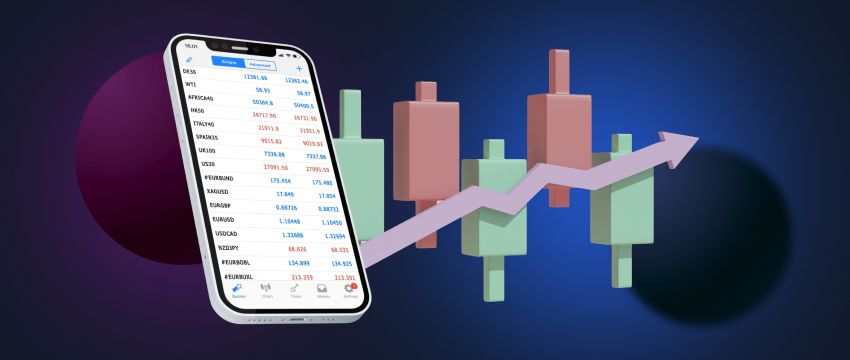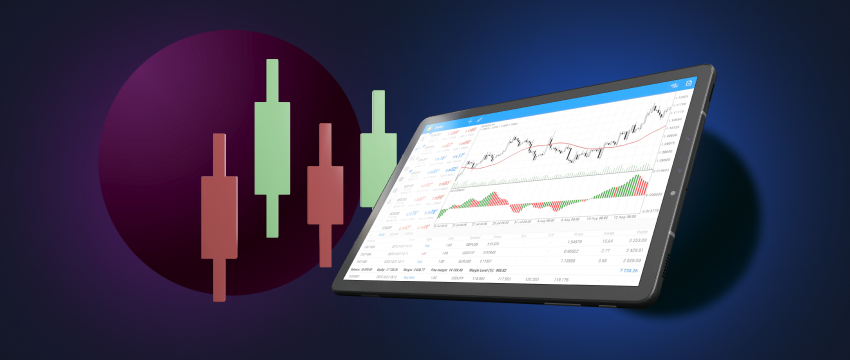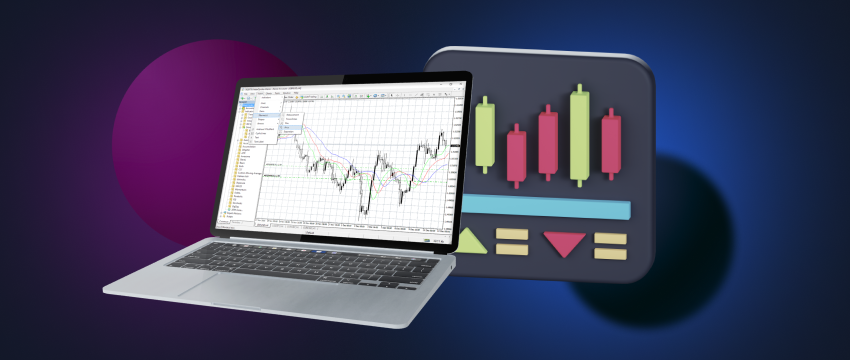Forex charts play a vital role in technical analysis. They help traders identify and analyse trends in the forex market as well as make better-informed trading decisions.
Forex charts offer a way for traders to acquire a visual representation of currency price movements over time. This gives traders the ability to identify patterns and trends to predict future price movements.
In this article, we’ll take a closer look at different types of forex charts and how to read them.

Forex charts
While several types of forex charts exist, some of the most popular among global traders are line charts, bar charts, and candlestick charts. Each chart presents information in a slightly different way, so it’s important to understand the differences between them.
Line charts
Line charts are considered some of the easiest types of forex charts due to their simplicity. They show the closing prices of a currency pair over a specific period, with each data point represented by a dot or a small line segment. But, while line charts are useful for identifying long-term market trends, they don’t provide as much detail as other types of charts. For instance, a line chart doesn’t provide in-depth insights into price behaviour within a specific period. Rather, the chart offers a zoomed-out view of price movements. Despite its limitations, line charts help traders see trends more easily and visually compare closing prices between different periods.
Bar charts
Bar charts are useful for identifying short-term price fluctuations and market instability. However, in contrast to line charts, bar charts offer traders more insightful data. This includes the high, low, open, and close prices for each period, represented by vertical bars. The highest price paid is represented by the top of the vertical bar. The bottom of the vertical bar represents the lowest price paid. The left-side horizontal hash on the bar represents the opening price, and the right-side horizontal hash represents the closing price. In addition, the bars become larger as price movements become more volatile and smaller as price fluctuations become quieter. This change in size is due to the way the bars are constructed. It is important to note that a bar reflects one period of time, be this one hour, one day, one week, etc. When reading a bar chart, a trader must know what timeframe the bar is referring to.
Some of the key benefits of using bar charts in forex trading include:
- Bar charts offer a concise representation of price movements over a particular timeframe. Each bar represents the opening price, closing price, high price, and low price of a currency pair during the period. This makes it easy to identify trends and patterns in the market.
- Bar charts are simple to read and interpret, regardless of trading expertise. They can also be colour-coded for further clarity.

- Bar charts offer useful information about the market volatility and momentum of a currency pair. Long bars with small wicks typically indicate strong momentum. Short bars with long wicks indicate market uncertainty.
- Bar charts can also be used to analyse multiple time frames, be this from minutes to months. In this way, traders get a more thorough view of the market and make informed decisions about their trades.
Candlestick charts
Candlestick charts are similar to bar charts but offer even more comprehensive data. These charts tend to be a trader’s favourite because of how easy they are to read. Price movements on a candlestick chart are presented as coloured bars, indicating bullish or bearish market sentiment. Green bars indicate that a price closed higher than it opened. Red bars indicate that a price closed lower than it opened.
Advantages of candlestick charts in Forex trading
Candlestick charts are incredibly popular because of the depth of information they provide in an easy-to-interpret visual format. Other advantages are:
- Quickly and easily interpreted by traders of all levels.
- Aside from open, high, low, and close prices of a currency pair, they also provide data on the strength of the price movement, the direction of the trend, and potential reversal points.
- Candlestick patterns can help traders identify market sentiment (bullish or bearish).
- The charts can be used as an integral component of risk management strategies by identifying potential reversal points and providing traders with insights on when to exit a trade.
- Candlestick charts are a great technical analysis tool. They enable traders to use different technical indicators to help identify potential entry and exit points.
Reading Forex Charts
Once you understand the different types of forex charts, you can start reading them to analyse market trends. Here are some key elements to look for when analysing forex charts:
Trendlines
Trendlines are straight lines that connect two or more price points and show the direction of a trend. An upward trendline connects two or higher lows, indicating an uptrend. A downward trendline connects two or more lower highs, indicating a downtrend. Using trendlines, traders are able to identify key support and resistance levels or predict future price movements.
Support and resistance levels
Support and resistance levels are areas where price movements are likely to pause or reverse. Support levels indicate a surplus of buyers, whereas resistance levels indicate a surplus of sellers. Support levels are areas where buying pressure is strong enough to prevent prices from falling further. Resistance levels are areas where selling pressure is strong enough to prevent prices from rising further.

Rata-rata bergerak
Moving averages are lines that show the average price of a currency pair over a particular period of time. Traders often use multiple moving averages with different time periods to identify potential trading opportunities.
Indicators
Indicators are used to analyse market trends and predict future price movements using mathematical calculations based on price and/or volume data. Examples include Relative Strength Index (RSI), Moving Average Convergence Divergence (MACD), and the Fibonacci retracement tool.
Conclusion
Reading forex charts is an essential skill for traders who want to make informed trading decisions. Understanding the different types of forex charts is key to identifying potential trading opportunities and mitigating their risk of losses.
Disclaimer: This material is for general informational & educational purposes only and should not be considered investment advice or an investment recommendation. T4Trade is not responsible for any data provided by third parties referenced or hyperlinked, in this communication.




